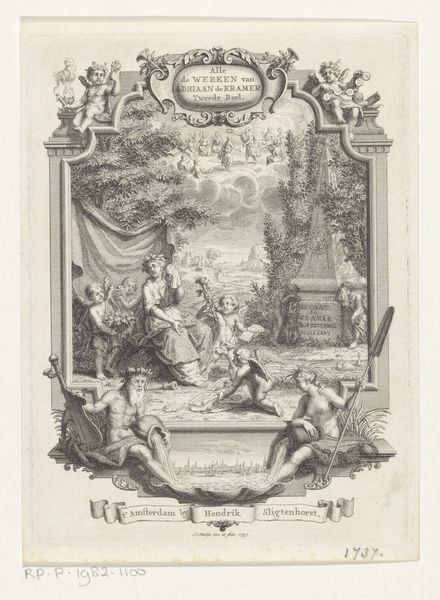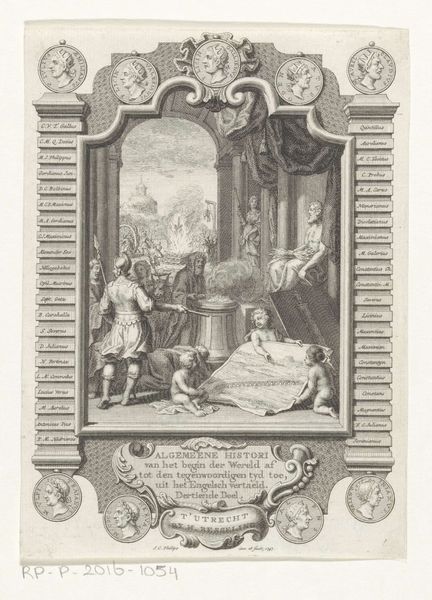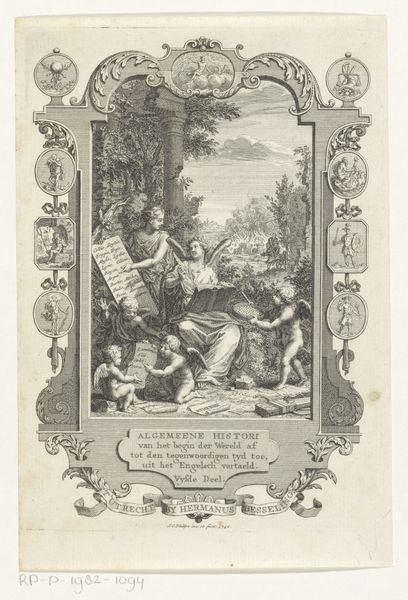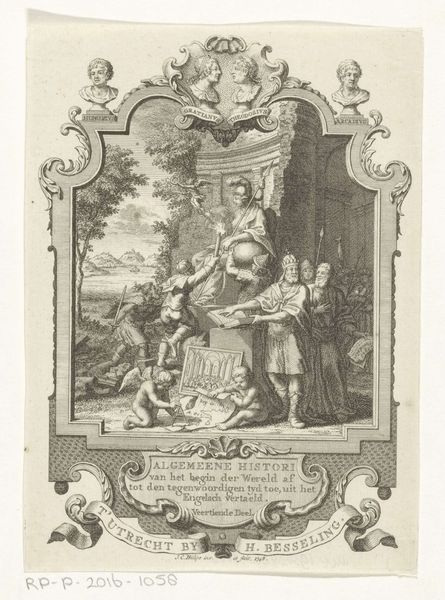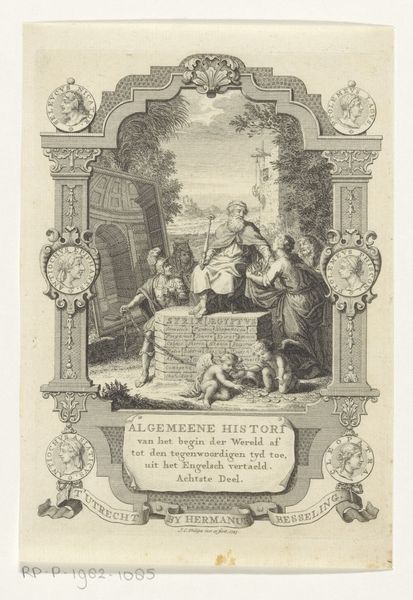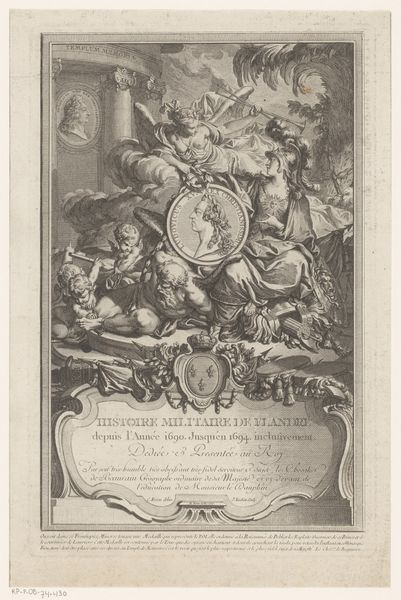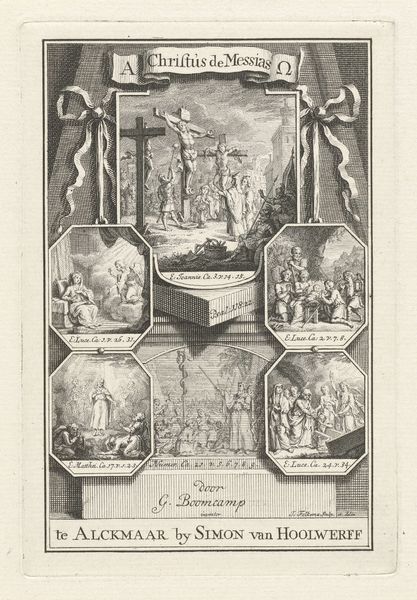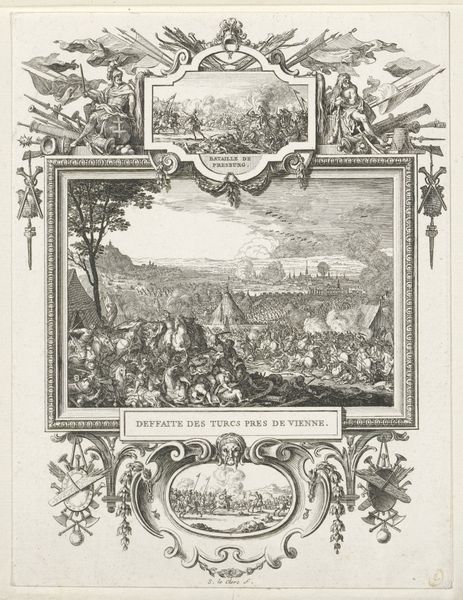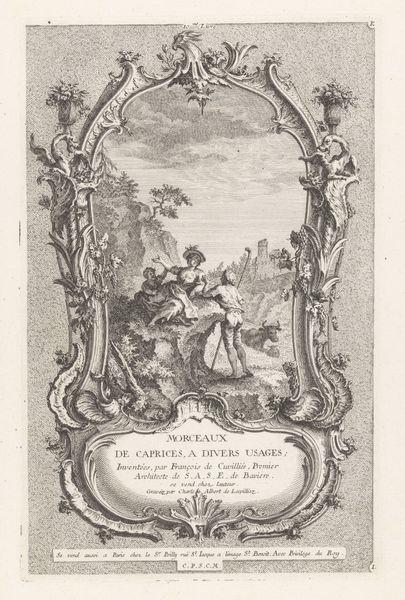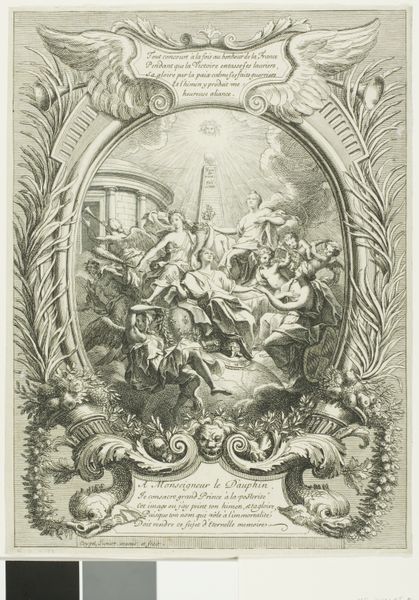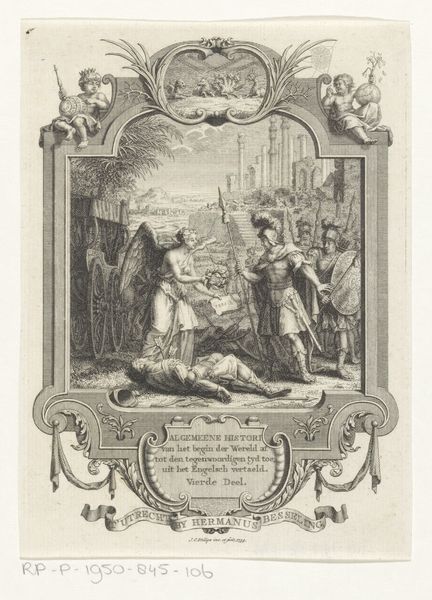
Cartouche met allegorie op de geschiedenis van Israël 1736 - 1737
0:00
0:00
print, etching, engraving
#
allegory
#
baroque
# print
#
etching
#
old engraving style
#
figuration
#
pen-ink sketch
#
line
#
history-painting
#
engraving
Dimensions: height 176 mm, width 125 mm
Copyright: Rijks Museum: Open Domain
This print, made by Jan Caspar Philips around 1737, tells the history of Israel through engraving. This is a process that involves cutting lines into a metal plate, inking the surface, and then wiping it clean so that ink remains only in the incised lines. The plate is then pressed onto paper, transferring the image. Engraving like this demanded considerable skill and time. Philips would have needed specialized tools to achieve the fine lines and details we see here, and a deep understanding of light and shadow to create the tonal variations. The choice of engraving for this subject matter is also significant. In the 18th century, prints were a primary means of disseminating information and ideas. They democratized images, making them accessible to a wider audience than unique paintings ever could. Consider, then, how the labor-intensive process of engraving is here used to communicate a religious and historical narrative, embedding the history of Israel within a broader context of knowledge production and consumption. It’s a reminder that even seemingly straightforward images are deeply intertwined with the social and economic conditions of their creation.
Comments
No comments
Be the first to comment and join the conversation on the ultimate creative platform.
